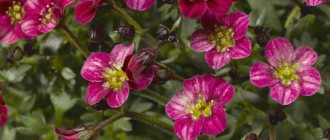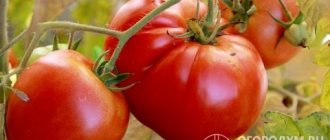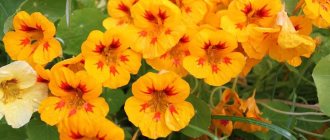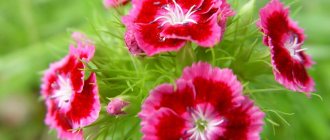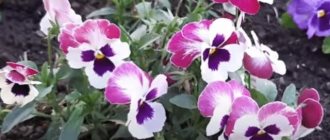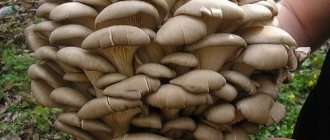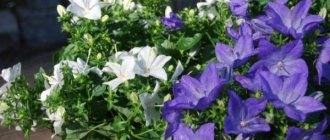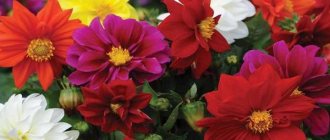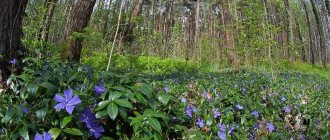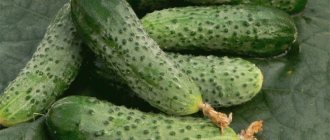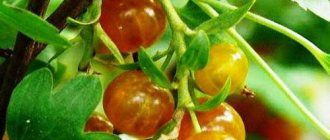Nasturtium (Tropaeolum) or capuchin is a herbaceous plant from the Nasturtium family. About 90 species of this genus are found in nature. Nasturtiums are native to Central and South America. But this crop has become quite popular in mid-latitudes as a decoration for flower beds and garden plots. In the tropics, nasturtiums grow as perennials. In temperate climates they are grown as annuals because they do not tolerate cold weather.
Nasturtium has become popular not only due to its attractive flowers and decorative leaves, but also due to its ease of care. Even novice gardeners can easily master the intricacies of its cultivation. The plant is most often propagated by seeds. You can grow them as seedlings or sow them directly into open ground. But in order to grow healthy, abundantly flowering nasturtiums, you should know some nuances.
Biological characteristics: description
From South America, the bright flower came to Europe thanks to the Spanish conquistadors, who discovered it in the Mexican jungle and were amazed by the unusual plant. Scientist Nicholas Monard called it blood flower or Indian watercress.
And nasturtium received its real name thanks to the botanist Carl Linnaeus, who found it a specific place in his classification of plants. He figuratively compared the rounded leaves with the shields of warriors, and imagined the flowers as the bloody helmets of enemies, which in those days were hung on the columns of buildings.
Variegated nasturtiums
In Germany, the plant is known as capuchin because the calyx of the nasturtium resembles the hoods of Capuchin monks. So the name reflects both the peaceful life of people and periods of war.
Nasturtium or capuchin belongs to the herbaceous perennial crops of the a family of the same name . Since it does not tolerate cold climates, it is grown in the middle zone as an annual crop. The plant is most often creeping: tender and flexible shoots branch, forming numerous lashes up to 3-5 m long.
Rounded leaves of different shades of green on long petioles form smooth or wavy edges. They have a lobed, thyroid or palmate shape. Veins of a lighter color extend from the center to the edges, which gives the leaf additional decorativeness.
One of the climbing forms of nasturtium
They are framed by flowers, among which the predominant colors are from yellow to red with transitional forms. The flowers are large and reach 5 cm in diameter, located one at a time in the leaf axils. They are irregularly shaped with a spur, simple or terry.
In appearance, the flowers are similar to gramophones, the cups of which are formed by 5 petals, and in the center there are 5 stamens and a pistil, where the ovary is formed. The flowers have a pungent and somewhat distinctive aroma that attracts insect pollinators and, in the wild, hummingbirds.
The color of the shoots is directly related to the color of the leaf blade: if the flowers are red or purple, then the leaves are dark green, yellow flowers are combined with light green tones.
This is what capuchin seeds look like
The root system is taprooted with a few and underdeveloped lateral roots, which are located close to the surface and go to a depth of no more than 10-12 cm. Nasturtium produces large seeds up to 5-7 mm in diameter, formed from 3 parts. They are round, concave in shape with a light yellow shell and jagged edges. Separated along the entire length by longitudinal grooves.
The most common 2 garden forms: bush and climbing.
- The bush is characterized by an erect central shoot, from which shoots of the first order extend, located at an acute angle. The bush reaches 30 cm in height and is characterized by weak growth and close internodes, which gives the bush a compact shape.
- Climbing or creeping differs in that the main shoot is located on the ground and forms numerous lashes that extend from the main shoot at a right angle. Since the distances between internodes are large, the plant is very spreading and occupies a large area.
Varieties that are most popular with gardeners
Indian chrysanthemum - characteristics of varieties and cultivation from a mixture of seeds
Among the wide variety of plant varieties, it is necessary to highlight the most popular among gardeners.
- Alaska
Nasturtium Alaska is distinguished by a wide variety of bud colors. The height of the bush can reach up to 40 cm. The shoots are well developed with a large number of lateral branches.
Alaska variety
- Maiden Beauty
Nasturtium Maiden's Beauty is distinguished by a variety of colors. The buds are small in size, located on small side shoots.
- Canary
An annual climbing plant, the length of the vines can reach up to 3 meters. Small inflorescences are located on the side shoots.
Blooms bright yellow throughout the summer.
- Vesuvius
The plant grows to a height of no more than 26 cm. The stems are strong, erect, with a large number of lateral branches. The buds are orange in color with burgundy splashes.
Important! In order for the bush to maintain its compact size, it is necessary to timely tie up the shoots.
- Cherry Rose
The height of the plant is no more than 50 cm. The bush grows compactly. The flowers are large cherry color. Most often used to decorate balconies and window boxes.
Cherry Rose variety
- Black truffle
A low-growing crop, the height of which is no more than 30 cm. The leaves are carved green. The inflorescences are dark cherry in color and bloom until the end of October.
- Mahogany
The plant is small with erect shoots. The leaves are round and dark green. Terry buds are bright red.
- Mayskaya
Annual plant. Most often they crawl along the ground. The length of the stem can reach up to 1 meter. The buds are orange in color with bright red stripes.
May nasturtium
- Silk Road
The climbing plant has a thick stem, from which lateral shoots extend in large numbers. Inflorescences of different colors are located on high peduncles.
- Cherry rose
The unusual coloring of the plant makes it popular among gardeners. The height of the bushes is up to 30 cm. The buds are painted in a rich red color.
- Black Lady (Black Velvet)
The plant is distinguished by burgundy buds with yellow spots. The bush can reach a height of more than 40 cm.
- Moonlight
The crop grows in the form of vines reaching a length of up to 3 meters. Small buds are light yellow in color.
Variety Moonlight
- Golden Globe
The bush has the shape of a ball. Often used to create compositions.
The height of the bush can reach up to 40 cm. The leaves are large, shield-shaped. The buds are large, terry, golden in color.
- Gleming Mahagani
The bush is stable, the height can reach up to 40 cm. The inflorescences are densely located on the shoots. The bud is double, red.
- Ladybug
A compact plant, the height of which can reach up to 25 cm. The leaves are small, the branches are underdeveloped. A special feature of the buds is a delicate apricot color with dark spots.
- Salmon Baby
The liana can reach a length of up to 2 meters. Often used to decorate gazebos. Blooms in early summer, retains buds until the first frost. The flowers are salmon-colored.
Variety Salmon Baby
- Peach Melba
Nasturtium is low growing. The height of the bushes can reach up to 30 cm. The shoots are weak and spread along the ground. The leaves are round in shape and rich green in color. The buds can be yellow and orange.
- King Theodore
The height of the bush reaches 40 cm. The leaves are small and green. A distinctive feature is the terry red buds.
Important! The flowers of the plant contain large amounts of vitamin C. Therefore, the buds are often eaten as additions to salads.
Types of nasturtium
Variety of shapes and colors of the “South American beauty”
Growing nasturtiums (Latin Tropaeolum) or capuchins became popular in the 50s of the last century. Its unpretentious bushes decorated parks, squares, squares, and garden plots. Not one of the “6 hundred square meters” was complete without beautiful orange “gramophones”. But about 10 years passed, and nasturtium was replaced by no less beautiful gardening plants. In European countries it is generally undeservedly forgotten.
Over the past years, breeders have created up to 90 species: a whole range of colors, colors and shades. Bush, ampelous, climbing, terry, and climbing specimens are known. But no more than 10 of the most common species are usually grown in garden plots.
Large or May nasturtium
May nasturtium: one of the varieties
Large or May nasturtium
- It is one of the most famous. Both erect and creeping varieties have been bred. Erect is a rounded bush up to 70 cm tall.
- The stems are fleshy and juicy, hollow inside. The leaves are located on long petioles and have different colors. A grayish coating with a purple tint forms on the underside.
- The flowers are yellow to bright red, double or semi-double, fragrant.
- With proper agricultural technology, flowering begins in June and continues until the end of September.
- Easily propagated by self-sowing.
- This species is represented by dozens of varieties.
Tuberous
Tuberous nasturtium as a fence design option
Tuberous
- It is distinguished by thin, climbing stems up to 2 m. The leaf blade is wide with rounded edges, the color is gray-green, on which light veins are clearly visible.
- It has a classic flower shape and a classic orange-red color scheme.
Cultural or hybrid
Small nasturtium
Cultivated or hybrid Cultivated or hybrid is considered the most numerous in terms of the number of varieties. Among them there are low-growing forms up to 30 cm in height, climbing ones, reaching 1 m, creeping ones with a fleshy stem up to 3 m, dwarf ones, growing only up to 15 cm.
Among this group the following stand out:
- Azure , a distinctive feature of which are unusual blue flowers. They are used in individual plantings and in flower beds.
- Tricolor has a contrasting combination of colors, which makes it a unique creation of breeders. It looks unusual as a separate plant and in any composition.
- Multileaf is not suitable for flower beds or ridges, but fits perfectly into the design of an alpine hill, since it has a variegated leaf blade and a small number of flowers.
Small is formed by thin stems that branch abundantly. The leaves are supported on delicate and long petioles and are small in size and thyroid-shaped. The flowers are small: they reach only 3 cm in diameter. The color of the flowers is yellow with dark spots inside. It blooms for a long time until frost.
Shield-bearing
Nasturtium shieldbearing
Cultural or hybrid
- Shield-bearing is a creeping shrub with dark green, fragile shoots.
- It grows up to 4 m. Between the dark green leaves there are burgundy flowers up to 6 cm in diameter, which creates a bright and unusual “floral ensemble”.
Foreign or Canarian
Nasturtium canary
Foreign or Canarian
- This is a climbing form that beautifully wraps around trellises and arbors, stretching up to 3.5 m.
- The leaves are medium-sized, five- or seven-parted. The flowers are yellow, corrugated, small. But due to their abundance, a variegated composition and yellow splashes are created.
Many varieties are unusual and highly decorative, but few even experienced gardeners can share their experience of growing such nasturtiums. Although they are not capricious, growing them requires certain skills.
Of the bush forms, the most interesting are: white “Snow Maiden”, crimson “Ruby”, dark red “Othello”, dark purple “Black Prince”. Among the flyers, there is a high demand for light orange “Aurora”, fiery red “Fire Rain”, orange “Cardinal” and “Orange Ball”, red “King Theodore”.
Representative of a new generation of nasturtiums
It is worth trying new varieties on your site that have recently appeared on sale: “Mahogany”, “Vanilla Berry”, “Vesuvius”, “Day and Night”, “Cherry”, “Alaska”. They will delight you with their shapes and unusual colors of both flowers and leaves.
Reviews of nasturtium flowers
Natalya Voronova. In the spring, I plant some of the seedlings in flower beds, and leave some in pots on the windowsills. And I really like it: from early summer until late autumn, nasturtium pleases me and all my household with its bright blooms. Next year we will try to decorate the gazebo with nasturtiums. I think it will turn out very beautiful, creative and elegant.
A detailed description of the houseplant soleirolia and how to care for it at home. The carnivorous plant sarracenia and what care it needs at home, read the link https://cveti-rasteniya.ru/sarraceniya-uhod-v-domashnih-usloviya.html
Daria Merzlyakova. I have been planting nasturtium in my dacha for more than 10 years. At first, purely because of the beauty of the bright orange and yellow flowers. And after a neighbor told me about the beneficial properties of nasturtium, I began to make medicinal tinctures and various seasonings for meat and fish dishes based on nasturtium. So, for example, I grind nasturtium petals with garlic to a thick paste. Then I add a little salt and mayonnaise there. The result is a tasty and quite original sandwich paste.
It will be interesting to watch the video material on nasturtium, we wish you pleasant viewing.
Landing
Nasturtiums are flower crops that can be grown by seed. Although this plant is a perennial, it is cultivated as an annual. Planting is carried out directly with seeds in the ground or using the seedling method.
Nasturtium in landscape design
Sowing seeds in the ground is the simplest , but not always reliable way. Seed material is sown in the soil at the end of May, since return frosts are destructive for tender seedlings. The seeds are large and small holes are dug for them to a depth of 2 cm and 2-3 seeds are dropped per hole with an interval of 20-30 cm. Preliminary treatment is carried out with hot water at t = + 40-+ 50 C for 15-20 minutes, after which is soaked for 24 hours. This way the shell gets wet and the seeds grow faster.
In the northern regions, the soil is first shed with warm water before planting, and after planting it is covered with non-woven material, and at night with plastic film. At the beginning of June, young shoots are opened and “brought into the light.”
The seedless method is convenient because the plants take root well in a permanent place and get sick less, but they bloom a little later. Seedlings are grown for early flowering. At home, seeds are planted in late March - early April. For planting, use a variety of containers: containers, glasses with a removable bottom, or peat tablets.
First, seed and soil are prepared:
- Large and full-bodied seeds are selected, defective and underdeveloped ones are rejected.
- For disinfection for 15 minutes. placed in a pink solution of “potassium permanganate” (or Fitosporin solution) at t=60C.
- Then they are wrapped in a damp cloth for a day to swell and soften the surface layer.
- Planted in purchased soil or prepared from turf soil, sand and peat (1:1:1).
When using peat tablets in the third leaf phase, nasturtium is planted in a pot of soil along with the tablet, which gradually dissolves in the ground, giving the soil looseness. In this case, the root system is not injured.
Planting is done as follows:
- seeds are placed in convenient containers filled with soil, in holes up to 2 cm deep. 2-3 pieces each. in every
- the ground is compacted and sprayed with a spray bottle so that the seeds do not bury themselves and the top layer remains moist
- at t=+20-22C, shoots appear on day 10-15
- then the temperature is lowered to +18C
- The seedlings are placed in a bright place, as they quickly stretch
- plants do not grow due to a weak root system
2 weeks before placement in the ground, seedlings are hardened . At the same time, every day containers with young plants are taken out into the open air for several hours, avoiding drafts and too bright light. This way, tender shoots adapt better to external conditions and replanting will not injure them: the flower crop will quickly grow.
Nasturtiums are planted together with pots, so as not to injure the root system, in the first ten days of June at a distance of 20-40 cm from each other. In case of unexpected cold snap, young plants are “wrapped” with non-woven material. Flowering occurs 1-1.5 months from the moment of sowing and ends with the first autumn frosts.
Growing seedlings
Despite the powerful leaf part, the root system of nasturtium is quite weak, so any injury to the roots is detrimental to the plant. This must be taken into account when planting using the seedling method, carefully planting the crop with an earthen lump.
In rare cases, nasturtium is propagated by cuttings . Usually this method is convenient for obtaining new varieties or breeding terry forms. This technique allows you to preserve 100% of the species qualities of flowers. Young cuttings are rooted in damp sand or water, and then planted directly into the ground, bypassing the school.
Reproduction
Since nasturtium is grown as an annual crop, it is propagated mainly by seeds. Planting material ripens well and remains viable for 3–4 years. Nasturtium seeds are medium-sized, covered with a ribbed shell and look like a nut. When unripe, they are pickled and used in cooking as a substitute for capers.
Collect the seeds after the fruit capsules turn light brown and are easily separated from the stalk. The collected fruits are laid out in a dry place, dried and peeled. Store seeds in cardboard boxes or fabric bags.
Nasturtium can reproduce by self-sowing. But early spring seedlings often die from frost. Self-seeded plants bloom only at the end of summer for only a few weeks.
Very rarely, nasturtium is propagated by cuttings. This method is used to obtain new plants from the best specimens of perennial species. The queen cells are left to overwinter in a bright and cool room, occasionally watering them. In spring, cut cuttings easily take root in water or wet sand.
Features of planting in open ground
To grow nasturtium, you need to take care of its habitat.
The plant prefers:
- a lot of light, since in the shade its lashes lengthen and the leaves lose their bright color;
- absence of strong winds (drafts);
- light, fertile and slightly acidic soil;
- mulching to preserve moisture and prevent weeds;
- drainage, as the root system easily rots.
Soils rich in organic components are unsuitable for nasturtium, since it loses its decorative qualities: the plant produces abundant foliage and a small number of flowers.
In some cases, to change the appearance of a flower garden, transplantation of capuchins is required . This is not an easy procedure: it requires careful treatment of the easily damaged root system. Transplantation is carried out with a lump of earth and even with careful handling the plant remains lethargic and sick for a long time. You need to be patient and carefully water the flower until it comes back to life.
Features of care in the garden and on the balcony
For balconies, terry mixture of nasturtium is most often used. The flowers have bright colors. Care in the garden and on the balcony is no different. In order for the plant to bloom profusely, the following points must be observed:
- It is necessary to water the bushes daily. It is recommended to spray the bushes with water from a spray bottle in the evening.
- Loosen the soil regularly, especially if the plant is grown on a windowsill.
- Remove weeds in a timely manner.
- It is also recommended to remove faded buds and dried branches.
In order for the nasturtium in the pot to bloom profusely, it is recommended to regularly apply nitrogen and potassium fertilizers. For these purposes, ready-made mixtures are used, which must be dissolved in water and the bushes must be fed once a week.
Growing on the balcony
When growing a plant in the garden, a problem often arises when shoots spread along the ground. It is important to know how to tie climbing nasturtium:
- Supports for bushes are installed as soon as the first shoots appear. It is necessary to stretch the wire between the supports.
- After young shoots appear, it is necessary to straighten the vine, forming a beautiful fan.
- To strengthen the vine, you should not use a rope, since the side shoots quickly intertwine with each other, forming a solid canvas.
Often, several plant varieties are used to form such vertical flower beds.
Attention! In order for the flowerbed to bloom profusely throughout the summer, it is recommended to install automatic watering systems.
Basic rules of care
The appearance of the plant with proper agricultural technology
Growing nasturtium is not a difficult task, but some rules should not be neglected.
During cultivation, the following techniques are used:
- Fertilizing: in the first stages of growth, nitrophoska is used, which is useful before flowering begins. Then they are fed with potassium and phosphorus fertilizers, based on their instructions. After flowering begins, additional nutrients are not required to be added to the soil. It is not recommended to introduce nitrogen, which leads to abundant growth of green mass.
- Planting in loamy, well-drained soils . Fresh organic fertilizers and lime are not used for this crop. An excess of nutrients has a bad effect on the development of the plant.
- Place in a sunny, open place, but not in the sun . You can plant a flower crop in partial shade, but this most often leads to elongation of the stems and a decrease in the number of flowers. The leaves become smaller and pale.
- Abundant watering during plant growth and moderate watering after flowering begins. Only after the earthen clod has dried, the soil is irrigated again. With strong moisture, a flower crop develops many leaves and few flowers; on heavy soil, the roots can rot. When placed near a pond, watering should be limited.
Droplets of water on leaves on a sunny day can cause burns.
Watering in sunny weather leads to burns on the leaf blades. Droplets of water on the leaves “work” like lenses, causing parts of the plant to overheat. With drip irrigation, nasturtium is watered in the evening.
- Removing dried and dead flowers, which significantly prolongs flowering time . This technique promotes the active formation of flower ovaries and the plant itself looks more well-groomed.
- Mulching not only retains moisture, but also keeps the soil layer loose . This eliminates the need for regular weeding and loosening.
- Control of weeds, especially perennials that have a powerful root system . To do this, carefully dig up the soil before planting, removing all roots. Next, the crop is periodically freed from weeds, and shallow loosening is carried out to remove the soil crust.
If necessary, you can collect seeds that remain viable for a long time - from 3 to 5 years. To do this, do not pick off the “old” flowers on one lash, waiting for the fruit to form. When the seeds turn whitish, they should be collected and spread out to dry.
Nasturtium is capable of self-sowing: the seeds ripen together and scatter on the ground. Even during frosts, they are well preserved in the soil and produce vigorous shoots the following year.
With the onset of autumn, watering is reduced to a minimum, and then stopped altogether . After the ground part has dried, the shoots are removed by cleaning and digging the soil. The “heat-loving beauty” cannot withstand winter, so in the spring it is sown again.
Choosing a place and soil for planting
For planting nasturtiums, choose sunny and wind-protected areas. Foreign nasturtium can be planted in partial shade. In shady corners, flowering will be weak and the shoots will be long and thin.
The soil should be moderately fertile without excess nitrogen fertilizers. Nasturtium will grow best in loamy or sandy loam soils. If there is an excess of mineral fertilizers in the soil, nasturtium will produce more green leaves than flowers.
Before planting, do not forget about drainage. The soil should allow water and air to pass through well; the plant does not like stagnant moisture.
Collecting seeds
Capuchins are one of those rare crops from which you can collect seeds without having to buy them every year. In addition, they are well stored for several years and will not lose their viability.
To obtain seeds, leave one vine from which the dried flowers are not removed, where the seeds are formed. They are large and green. When ripe they turn whitish. The seeds ripen 40-50 days after the flower fades.
Nasturtium seeds can be collected independently and planted in subsequent years.
Seeds are collected without waiting for them to scatter on the soil (self-seeding occurs). Ripening takes place in a warm, ventilated room. After the seed has dried, it is placed in paper bags and stored until next spring at room temperature.
With thoughtful, correct placement, nasturtium will give the area a bright and elegant look throughout the summer, without requiring any special care from you. She is unpretentious and copes with many difficulties on her own, and the task of the gardener is only to help her a little with this.
Caring for nasturtium flowers
Nasturtium is unpretentious and does not require special care. Basic care consists of watering the plants and weeding the flower beds. Tip: Weed control will be much easier if you mulch the bed after planting.
When the sprouts appear and begin to actively develop, they need regular watering. During flowering, the area should be watered only when the soil dries out. Excessive watering is detrimental: there will be few flowers.
It is also important to promptly remove dried flowers. This promotes the active formation of new buds. If you need seeds for next year, you can leave just a few ovaries to ripen.
Use in landscape design
Among nasturtiums there are ground cover, climbing and bush varieties , which is important to consider when planting, correctly placing a certain variety. Basically, the flowering plant is used for vertical or horizontal landscape design, which gives any unsightly corner of the garden a unique look.
In parks, gardens, and on the coast, the plant creates bright and cozy corners
It is a continuous green-orange carpet that covers the soil or trellis. It is ideal for mixborders, looks good in the foreground of the flower garden, and braids the walls of gazebos. Low-growing nasturtium planted in groups fits perfectly into the garden design.
Using a multi-leaf variety for a rocky hill
In combined plantings, it is better to use bush forms that go well with bells, delphinium, and ageratum. It is preferable to grow creeping forms separately, since most varieties grow strongly and produce abundant lashes that cover other plants.
Thus:
- if you want the nasturtium to bloom for a longer time (until November) , then at the end of the summer season you can dig it up, replant it in a flowerpot and place it on the loggia;
- bush nasturtium is perfect for decorating paths ; planted along the edges, it perfectly retains its shape and marks borders;
- climbing forms are ideal for hanging plantings: in hanging baskets or flowerpots, in balcony boxes.
Creating a trellis entwined with capuchins will cover an unattractive landscape, and an arch will make the entrance to the garden plot bright and unusual.
One of the options for placement in a flowerpot
Nasturtium looks great in a flowerpot, container, flowerpot, which can be placed on a balcony, terrace or veranda and complement the interior with drooping shoots with bright flowers. The planting container should be wide and shallow.
Care is no different from growing a flower crop in the ground:
- a flowerpot or flowerpot is placed in the fresh air or in a well-ventilated area
- make sure that the earthen lump does not dry out
- with regular watering, the drainage layer is important
- fertilize with fertilizer for flowering crops twice a month
- remove dried flowers and trim shoots so that they bush more strongly
You can grow nasturtium in pots as a perennial. In winter, the container with the plant is transferred to a cool room and watered moderately. By spring, the stems turn pale and elongate, so before “going out into the world,” thorough pruning or cuttings are carried out.
Features of cultivation
Nasturtium also has a second name - capuchin. The plant's homeland is considered to be South and Central America. In their warm climate, nasturtium grows as a perennial, but in harsh Russian conditions it is grown as an annual flower. Most often, the plant is used for landscaping a garden plot, but some prefer to decorate balconies or apartments with capuchin. To do this, it is planted in a deep pot and secured to the wall to give the vines the opportunity to “drain” down.
Thanks to its aroma, nasturtium serves as protection for neighboring flowers from aphids, whiteflies, Colorado potato beetles and cabbage caterpillars.
Pest and disease control methods
Due to its pungent aroma and phytoncidal properties, nasturtium itself is able to cope with some “enemies of the garden.” It perfectly protects the soil from fungal diseases, and when planted in vegetable beds or under trees, the flower crop repels whiteflies, aphids, cabbage grass, and the Colorado potato beetle.
A diseased plant looks unsightly
Nasturtium is rarely affected by pests, but can get sick:
- Black ring spot , in which brown dots appear on the leaves. The dots merge into spots, increase in size, leaves curl and die.
- Gray rot , which can be identified due to the appearance of gray dry spots on the leaf blades.
- Rust: it is noticeable due to convex brown inclusions, which gradually turn into dirty brown “drips”.
- Mosaic , when light green stains appear on the leaves, scattered over its entire surface.
- Bacterial wilt , in which the leaves in the lower part of the plant wither and die, and then the entire bush dries out.
At the first signs of infection (bacterial, fungal or viral), all affected parts of the plant are destroyed. If nasturtium is just starting to hurt, then it is treated with specially selected chemicals. The main thing is to correctly determine the cause of the disease in order to stop the development of a particular infection. Most often, the plant gets sick from excess moisture and overhead spraying.
The most common problem is yellowing of leaves . The change in their color in the lower tier is a natural process. But if the upper leaves begin to turn yellow, then the cause may be a lack of nutrition (lack of a certain element), growing in the shade, excess moisture, or the development of a disease.
To begin the fight against the disease in the early stages, plants need to be inspected regularly. Particular attention should be paid to the leaf blade, which in case of infection is removed immediately. For prevention, bushes are treated from time to time with alcohol and liquid soap.
Planting a flower
The main thing during the landing process is to choose the right place. If you carefully fulfill this condition, your flower, or the whole alley, will be lush, with the maximum possible flowering.
Remember that this flower does not tolerate drafts or shade. The soil for planting must be moist and highly fertile. Well-drained, slightly acidic, light soil is suitable for any variety of nasturtium.
Note! Avoid overwatering the plant, especially during active flowering. As a result of abundant watering, the flower may be very small, and the leaves will be lush.
Most often, the plant is planted at the end of May. If you planted the seeds, then expect the flower to start growing and blooming a little later.
Beneficial features
Nasturtium is interesting not only as an ornamental plant.
It is edible, and all its parts except the roots are added to dishes:
- Fresh shoots and young leaves, which have a piquant taste and contain an abundance of vitamin C, are used in salads, minced meat, soups and drinks.
- dietary dishes are sprinkled with crushed seeds instead of seasoning
- the seeds are suitable for making edible oil, which tastes similar to mustard
- flowers and leaves decorate salads and sandwiches
- the fruits are used in pickled form, which taste similar to capers
- Due to their strong aroma, dried flowers are used in tea mixtures
The rich chemical composition allows the plant to be used in folk medicine and cooking.
The plant is not forgotten in folk medicine, as it contains many useful substances. This is a whole group of vitamins, of which iron and iodine are of particular value. The juice is rich in organic acids. In addition, nasturtium is classified as a herbal antibiotic. It is mainly used in the form of decoctions and infusions.
The use of nasturtium is associated with a number of diseases. It is useful for:
- avitaminosis
- anemia
- skin diseases
- burns (use juice)
- rheumatism
- diabetes mellitus
- colds of various natures
A special substance is isolated from the essential oils of nasturtium - tropolein, from which drugs are created for the treatment of chronic coronary insufficiency.
This beautiful and fragrant plant is not forgotten by cosmetologists . It is part of ointments, creams, balms made for skin and hair. The tincture has a good effect on problematic facial skin and is used as a hair growth stimulator. Rinse the curls with decoctions to give them shine and silkiness.
What does a climbing nasturtium flower look like?
Nasturtium in the garden
Nasturtium is a flower that begins to bloom in early summer. There are a large number of plant varieties. But climbing nasturtium has common characteristics that distinguish the culture from other varieties.
Which family does it belong to?
Nasturtium flowers belong to the Capuchinaceae (Nasturtium) family. It can be a perennial or annual species depending on the variety. There are more than 80 plant varieties.
Briefly about the history of appearance
Bright flowers look great in any flower bed
The plant was first noticed in South America. Later, varieties of the crop spread to Central America. Gradually, the unusual flower became widespread in various countries, where it was called capuchin.
For reference! The seedling was brought to Russia from Holland. Due to its high ability to take root in any conditions, the plant has become popular.
Plant characteristics
Has the following characteristics:
- the vine forms side shoots, which leads to the weaving of large areas;
- suitable for landscaping gazebos, balconies and fences;
- the roots are located in the top layer of soil;
- buds are large yellow or orange;
- leaves are heart-shaped or small round.
The length of the vine can reach up to 4 meters with proper care. The crop can be grown using seeds or seedlings.
Useful properties of nasturtium
Nasturtium in a flowerbed can act not only as a decoration. The plant has a large number of beneficial properties.
The most famous include:
- bactericidal properties;
- vasodilation;
- anti-inflammatory properties (can be used to remove purulent formations);
- for the treatment of cough;
- treatment of skin for fungal diseases;
- restoration of the heart muscle;
- relief of menopause symptoms in women.
The plant has also gained great popularity in cosmetology. Using the plant extract, you can rejuvenate the skin and improve the condition of the hair.
Important! Nasturtium is not used for diseases of the digestive system. Also, if the juice of the culture gets on the mucous membranes of the eyes, inflammation may occur.
general information
Nasturtium is a herbaceous flowering plant that came to us from South America, but has long been successfully acclimatized. There are about 90 species in nature, and many of them feel comfortable in mid-latitudes. They are valued for their elegant and long-lasting flowering, and also for their taste and healing properties.
In Russia, nasturtium is often called “capuchin”, and it came to us from the Netherlands. There are annual and perennial varieties, vines and subshrubs. Opened flowers always take on a bizarre irregular shape of at least five petals, and they are also very fragrant. Among red and yellow nasturtiums, other colors are extremely rare.
Photo: tuapsevesti.ru
Answers to frequently asked questions
Why don't the seeds germinate?
The reason why the seeds do not germinate may be due to their long storage at home or in the store. If there are a lot of seeds, you need to check them in advance for germination by soaking several pieces.
Why are seeds soaked?
Seeds are soaked to test for germination, to encourage them to germinate in open ground and to prevent them from becoming infected with any disease.
How to harden nasturtium seedlings?
Temperature hardening of seedlings: when planting, the container with seedlings is covered with a covering - polyethylene, a lid, etc. to harden, the covering is removed for a while. In turn, the seedlings receive the necessary oxygen and sunlight, which has a beneficial effect on their growth.
The nasturtium seeds have sprouted, what to do next?
As soon as the first shoots appear, the film covering them is removed, and the container itself is placed in a bright place to provide the required amount of light. For proper growth, sunlight should illuminate the shoots for at least 12-16 hours. If there is not enough light for the sprouts, they will begin to stretch in length, then weaken and stop developing. From the moment the sprouts appear, the temperature is maintained in a certain way: it cannot be less than 18 degrees, but it cannot be above 22 either. The emerging shoots require constant watering, depending on the frequency of drying out of the soil.
Where to buy and cost of the plant
Nasturtium seeds can be purchased in flower shops, special departments of supermarkets, and online resources. But before purchasing planting material, you must always check its expiration date. And it is worth considering that vine seeds lose their viability 4-5 years after collection.
The cost of planting material is low. And on average, you will have to pay 25-50 rubles for a package of plant seeds.
An attractive climbing nasturtium will be an excellent choice if you need to quickly create a hedge on your garden plot or hide an unsightly place in the garden behind dense, flowering thickets. This vine looks very impressive, which is confirmed by numerous photos, and at the same time does not require much attention.
Why does the plant dry out and turn yellow?
Over time, the lower leaves of the vine turn yellow and die. And this happens for natural reasons. But if the leaves from the top of the crop dry out, this can be caused by a lack of nutrients in the soil.
And to correct the situation, it is enough to feed the vine with complex mineral fertilizer.
History of the origin of the plant
The name nasturtium comes from the Latin language, which means “little trophy.” A synonym for the meaning is victory in the struggle. The flower has even been recognized as a symbol of all-consuming passion. Thanks to its shield-like leaves and helmet-shaped flowers, in Russia it is called “capuchin”, another name for this plant in our country is “salad flower”. The Japanese consider nasturtium to be the personification of patriotism. It is noteworthy that in different cultures nasturtium is considered the flower of a warrior, or a godly person, a hermit.
Nasturtium appeared in Peru, and then became widespread in Europe, being brought by travelers in the 16th century. In our country, the very first examples of nasturtium appeared after this plant had already taken root a little in Scandinavia. And the flower already had certain differences from its South American “brother”.
By the way, in the homeland of this plant, in Central and South America, there are 86 species of nasturtium. In the mountainous regions of Chile, Mexico and Argentina, nasturtium is mostly represented by perennials. And in Russia this crop is an annual one, since it is quite sensitive to cold weather. At the same time, nasturtium is quite patient with most growing conditions, but severe frosts and long winters have a detrimental effect on the flower.
This plant has served as a decoration for flower beds since ancient times. Among garden flowers, nasturtium has been in the lead for a very long time. Of course, modern gardeners prefer exotic annuals that have replaced the usual plant species. But this is the case when “an old friend is better than two new ones.”
Scientists have long noticed a peculiarity inherent in nasturtium flowers - when the sun goes down, they seem to flare up more brightly and seem to flame against the background of green foliage. When nasturtium blooms, the garden is filled with a wonderful aroma. The leaves of this plant can be not only in the form of a shield, but also have a separate palmate shape. Flowers of both sexes can be simple or have petals arranged in several rows. Different varieties of nasturtium are double or semi-double. Nasturtiums are usually colored in various shades of red, sometimes with a hint of yellow. You can find orange, crimson, red, bright yellow or even cream nasturtium.
Regarding the characteristics of the soil where it is planned to plant nasturtium, the opinions of gardeners differ. Some are sure that this plant feels great in almost any soil. And others believe that before planting, it is necessary to prepare the soil in a special way - it must be fertile, contain mineral supplements and micronutrients. In addition, heavy soil, in which moisture is retained at the roots for a long time, is destructive for nasturtium. This flower does not like groundwater flowing nearby either.
But, in any case, before planting a plant in “poor” soil, it must be fertilized with organic matter and mineral supplements containing microelements. At the same time, it is important not to overdo it - since overly fertilized soil will lead to vigorous growth of the plant, but the flowers themselves will develop poorly. If there is not enough organic matter, then not only will the flowers be small, but the plant itself will be weak and undeveloped.
Likes, doesn’t like – secrets of agricultural technology
Behind the unpretentiousness of a flower and the simplicity of its agricultural technology, as always, lies knowledge. About its origin, biological characteristics, vegetation cycle. Nasturtium also has secrets.
sun flower
She is light- and heat-loving, like a real native of the tropics. If you plant nasturtium in partial shade, it will “wrap itself up” in leaves and bloom much worse. To reach its full potential, it needs sun. A lot of sun.
It also needs “tropical” watering - infrequent, but plentiful, so that the soil is wet to the last root. During flowering, it is generally better not to rush with watering, wait for the soil to dry out, and then give a moisture-recharging dose.
The heat-loving nature of the flower is also manifested in the fear of the slightest frost. Never rush into sowing, let alone planting seedlings; wait for steady spring warmth.
More of a gourmet than a glutton
Installation - the more fertile the soil, the better, it does not work for nasturtium, and this must be the case when planting and caring for the plant.
On oily soil rich in humus, it drives away the foliage and blooms worse. There is no need to keep her from hand to mouth either, but it is better to feed her less often and with targeted “goodies” - mineral complex fertilizers for flowers. It is better to avoid manure, mullein, humus and other organic matter altogether.
